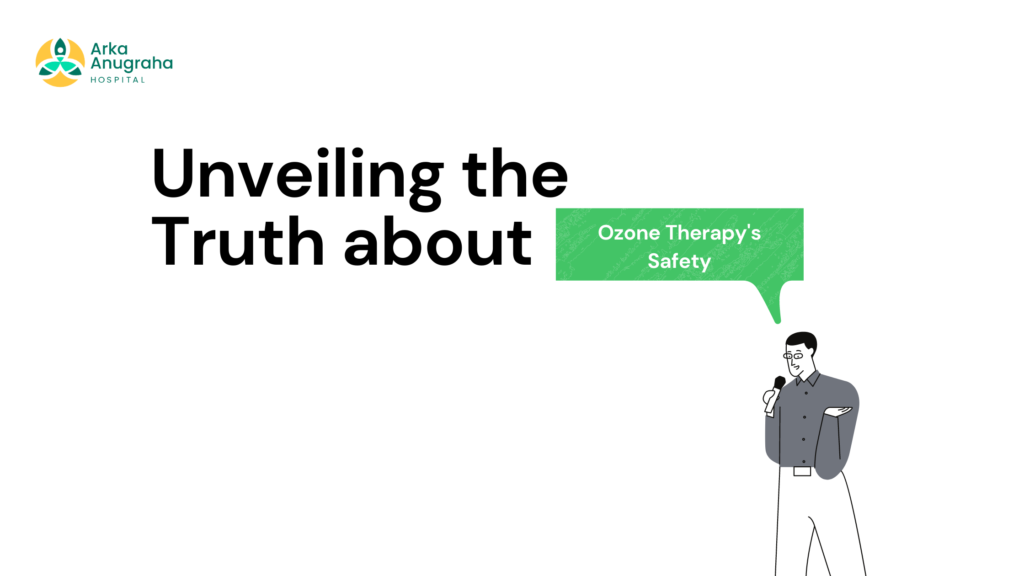- JP Nagar 6th Phase Bangalore
- 090197 04252
2023/07/07

Ozone therapy has gained attention as a potential alternative medical treatment for various health conditions. However, there are several misconceptions and concerns surrounding its safety and effectiveness. In this blog, we will delve into the topic of ozone therapy, debunking myths and providing factual information to help you make informed decisions about its use.
Ozone is a naturally occurring gas composed of three oxygen molecules (O3). It exists in both the stratosphere and the troposphere. While ozone in the stratosphere acts as a protective layer against harmful UV radiation, ground-level ozone is a byproduct of photochemical reactions involving volatile organic compounds (VOCs) and nitrogen oxides (NOx) emitted by various sources, such as industrial plants and vehicles.
One common myth is that all ozone is harmful. However, it is essential to distinguish between ozone in the stratosphere and ground-level ozone. Stratospheric ozone is beneficial and vital for protecting life on Earth, while ground-level ozone can be harmful when it reaches high concentrations as a result of pollution. Ground-level ozone is not generated directly but forms when pollutants react chemically in the presence of sunlight. Hence, blaming ozone alone for poor air quality is inaccurate.
Photochemical smog is a complex mixture of pollutants, including ground-level ozone, secondary organic aerosols, and their gaseous precursors. Ozone is a component of photochemical smog, but it is not the sole contributor. Factors like volatile organic compounds (VOCs), nitrogen oxides (NOx), carbon monoxide (CO), and sulfur dioxide (SO2) play significant roles in the formation of smog. Therefore, addressing ozone alone does not address the complete picture of air pollution.
Ozone therapy is a medical treatment that utilizes ozone for various therapeutic purposes. When administered correctly and under appropriate medical supervision, ozone therapy has been found to be safe and effective. However, it is crucial to note that ozone therapy should be performed by trained professionals following established protocols to minimize any potential risks. Proper dosage and administration techniques are essential for ensuring safety and optimizing the benefits of this therapy.
Ozone therapy has shown promise in various medical fields, including dentistry, dermatology, cardiovascular health, and musculoskeletal conditions. It exhibits antimicrobial effects, stimulates the immune system, enhances antioxidant activity, improves oxygenation, and promotes wound healing. Ozone therapy is a versatile treatment option that can be tailored to individual patient needs and can complement conventional medical approaches.
Ozone therapy, when used appropriately and responsibly, can be a valuable addition to medical treatments. Debunking myths and understanding the sources and effects of ozone is crucial for gaining a comprehensive perspective on this therapy. As with any medical intervention, it is essential to consult qualified healthcare professionals who can guide you through the benefits, risks, and appropriate applications of ozone therapy based on your specific health needs. By exploring the facts and dispelling misconceptions, we can make informed decisions and fully appreciate the potential of ozone therapy as a complementary medical approach.

Arka Anugraha Hospital dedicated to empower you regarding gut health, detox, weight loss, chronic conditions, metabolic syndrome, diabetes, and obesity.